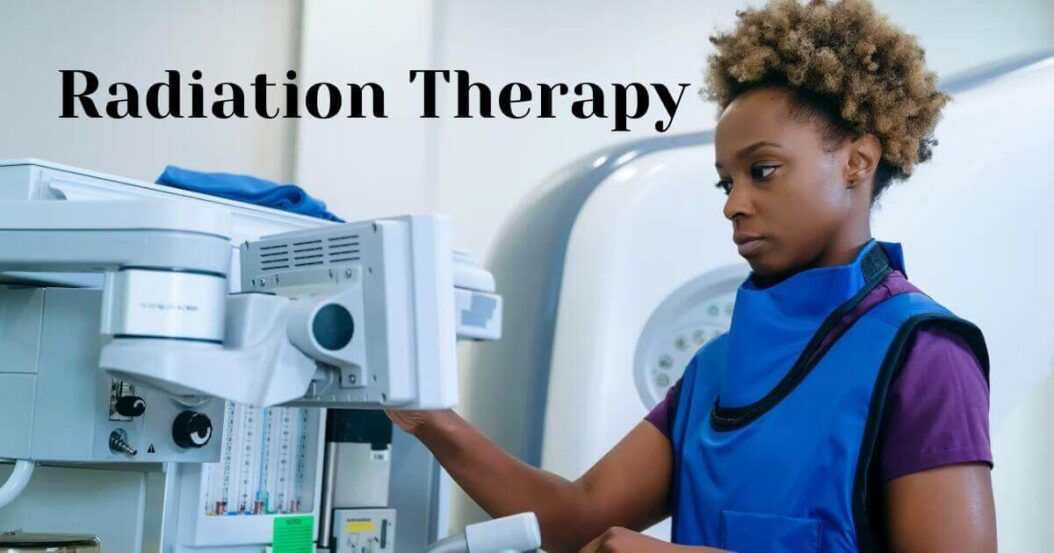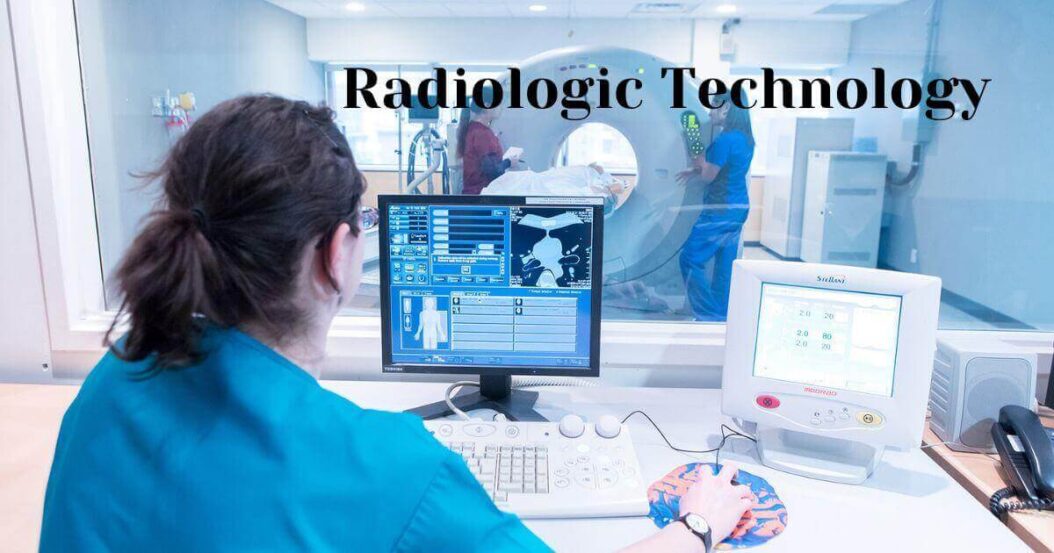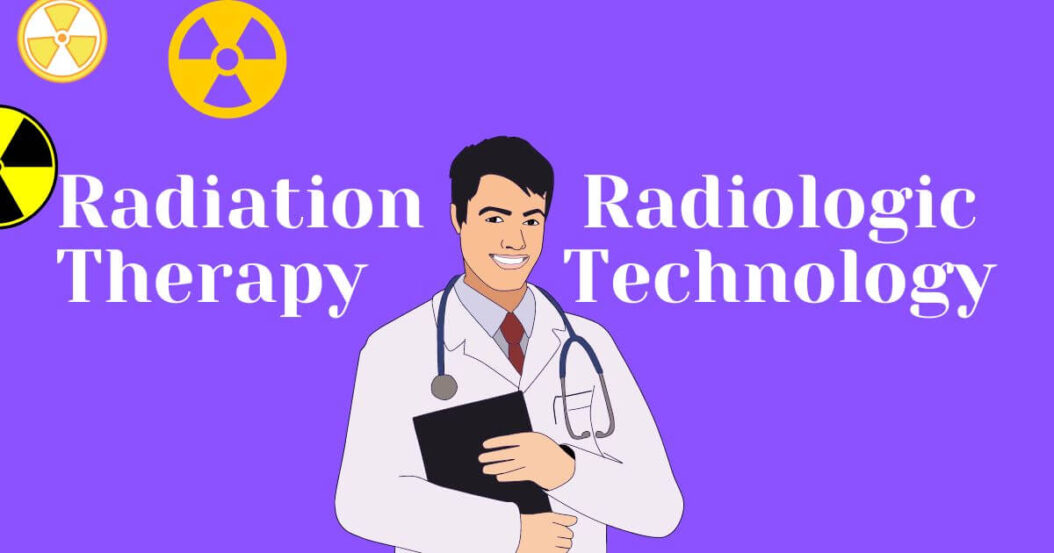Radiation therapy and radiologic technology are two distinct healthcare careers that both utilize radiation, but have different educational requirements, day-to-day job duties, and salary ranges. Understanding the key differences between these two fields can help you determine which career may be the best fit for your interests and professional goals.
Overview of Radiation Therapy
Radiation therapy, sometimes called radiation oncology, is a specialty within medicine that utilizes ionizing radiation to treat cancer and other diseases. Radiation therapists work directly with patients to deliver prescribed doses of radiation to tumors or areas of the body under the direction of a radiation oncologist (a physician who specializes in using radiation to treat cancer).

The goal of radiation therapy is to deliver enough radiation to destroy cancer cells while minimizing damage to surrounding healthy tissue. Different types of radiation therapy exist, including external beam radiation, internal radiation (brachytherapy), and systemic radiation therapy.
Applications of Radiation Therapy
From breast cancer to prostate cancer, radiation therapy stands as a stalwart treatment. Its versatility extends to various malignancies, making it an indispensable tool in the oncologist’s arsenal.
Innovation in Radiation Therapy
Recent advancements in technology, such as intensity-modulated radiation therapy (IMRT) and stereotactic body radiation therapy (SBRT), showcase the field’s commitment to enhancing precision and minimizing side effects.
Education Requirements for Radiation Therapists
To work as a radiation therapist, the minimum education requirement is an associate’s degree from an accredited radiation therapy program. However, many employers prefer candidates who have earned a bachelor’s degree. Radiation therapy programs teach students about human anatomy, oncology, radiation safety and techniques, radiation physics, and more. Coursework and clinical rotations make up these programs.
In addition to an degree, radiation therapists must earn professional certification by passing the certification exam from the American Registry of Radiologic Technologists (ARRT). Many states also require licensure to work as a radiation therapist.
Key Duties of a Radiation Therapist
The day-to-day work of a radiation therapist involves:
- Operating complex equipment, computers, and software to deliver radiation treatment
- Explaining treatment plans and answering patient questions
- Aligning and precisely positioning patients for treatments
- Monitoring patients during treatment using audiovisual equipment
- Keeping detailed records of treatments delivered
- Ensuring strict radiation safety protocols are followed
Radiation therapists often develop close relationships with patients during weeks or months of daily treatments. Combining technical skills with patient interaction and care makes this a rewarding, yet challenging, career.
Overview of Radiologic Technology
Radiologic technologists, sometimes known as radiographers, are medical imaging professionals who perform diagnostic imaging examinations like x-rays, CT scans, and MRIs. They work closely with radiologists (specialized physicians) to produce images of internal structures of the body to help diagnose illness, disease, and injury.

There are several disciplines within radiologic technology, including diagnostic radiography, computed tomography (CT), magnetic resonance imaging (MRI), mammography, cardiovascular-interventional radiography, and sonography.
Technological Advancements
The constant evolution of radiologic technology introduces cutting-edge devices and techniques, enhancing diagnostic precision. Digital radiography and 3D imaging have revolutionized the field, providing clearer insights into anatomical structures.
Education Requirements for Radiologic Technologists
To work as a radiologic technologist, professionals complete an associate’s or bachelor’s degree in radiologic technology from an accredited program. Coursework covers areas like anatomy, pathology, patient positioning, radiation physics, imaging techniques, and more. Programs also include clinical education in a real healthcare setting under the supervision of seasoned technologists.
After finishing an accredited program, radiologic technologists must obtain state licensure or certification by passing exams from the American Registry of Radiologic Technologists (ARRT). Mandatory continuing education is also required to maintain ARRT credentials.
Key Duties of a Radiologic Technologist
Responsibilities performed daily by radiologic technologists include:
- Preparing patients for imaging exams by taking medical histories and answering questions
- Operating sophisticated digital imaging equipment and computers
- Capturing clear diagnostic images of the patient’s body part or area
- Critically analyzing images with physicians to ensure quality
- Covering patients with shields to protect unexposed body areas from unnecessary radiation exposure
- Explaining treatment plans and outcomes to patients
- Adhering strictly to radiation safety guidelines for themselves, other staff members, and patients
Attention to detail, critical thinking, and communication skills are vital for radiologic technologists. They must be able to address and resolve problems on their own within the exam room with patients.
Comparison of Work Environments
Both radiation therapists and radiologic technologists typically work full-time schedules that may include evenings, weekends, holidays, on-call hours, or overtime. However, the day-to-day work settings differ:
Radiation Therapists: Primarily treat patients in dedicated radiation therapy departments, cancer treatment centers, or outpatient clinics alongside oncologists and nurses.They work exclusively with cancer patients.
Radiologic Technologists: Diagnose patients through medical imaging exams across a range of hospital-based departments and settings including emergency rooms, operating rooms, medical clinics, imaging centers, cancer treatment facilities, and mobile imaging service providers. They conduct diagnostic exams on all patient populations.
While both roles involve frequent patient interaction and some shared technologies, the treatment versus diagnostic focus of each field impacts the work environment.
Salary Comparison
According to the U.S. Bureau of Labor Statistics, the national average salaries for these healthcare careers are:
- Radiation Therapists – $105,706 per year
- Radiologic Technologists – $68,120 per year
Several factors account for radiation therapists earning higher average wages than radiologic technologists, including:
- Specialized expertise in cancer treatment
- Handling radioactive materials
- Higher barriers to entry (2-4 year degree required)
- Smaller talent pool results in higher demand
Geographic region, years of experience, level of education, certification, and employment setting also impact wages for both professions.
Which Field is Right For You?
If you are considering a career working with patients and special imaging technology, radiation therapy and radiologic technology offer excellent options – but which is the best fit? Key factors to compare include:
Education: Radiation therapy requires a minimum 2-year associate’s degree. An associate’s degree qualifies one to begin working as a radiologic technologist, but many pursue 4-year bachelor’s degrees for better job prospects.
Patient Population: Radiation therapists exclusively treat cancer patients undergoing radiation treatment. Radiologic technologists conduct diagnostic imaging exams on patients with all types of illnesses, diseases, and injuries across multiple departments.
Work Duties: Radiation therapists operate linear accelerators and other equipment to deliver targeted radiation cancer treatments. Radiologic technologists use x-ray, CT, MRI, and other diagnostic imaging technologies to produce images to diagnose medical conditions.
Salary: On average, radiation therapists’ salaries exceed those of radiologic technologists. However, earning potential depends on your geographic area, specific job setting, years on the job, level of education, and other factors.
Carefully weighing these key differences and your own interests, strengths, and career goals can help determine which specialty provides the best fit for you. Both radiation therapy and radiologic technology offer dynamic healthcare careers with excellent job prospects and opportunities to make a difference in patients’ lives.
Research on Radiation Therapy and Rad Tech Burnout Rates (Hellman, 2022)
- 31% of radiation therapists experience high levels emotional exhaustion/burnout
- Rad techs less likely to experience burnout than radiation therapists
- More research needed on wellness initiatives to support both workforces
Useful Links:
- American Registry of Radiologic Technologists: https://www.arrt.org
- American Society for Radiation Oncology: https://www.astro.org
Conclusion
While radiation therapy and radiologic technology utilize similar technologies, they are distinctly different healthcare careers. Radiation therapists play a specialized role within oncology, treating cancer patients with radiation under a physician’s care. Radiologic technologists fill a diagnostic role, operating imaging modalities to capture internal views of the body to diagnose conditions.
When choosing between these two options, consider factors like required education credentials, patient population, daily job duties, work environment, earning potential, and your own skills and interests. Both radiation therapists and “rads techs” fill vital roles within the healthcare field and make a profound difference in the lives of the patients they serve. Determining which specialty aligns best with your goals and strengths will put you on the path to a rewarding and meaningful career.
FAQs
What are the main differences between radiation therapists and radiologic technologists?
The key differences lie within their daily duties and purpose. Radiation therapists exclusively treat cancer patients by delivering prescribed radiation treatments. Radiologic technologists perform a wide range of diagnostic imaging exams to diagnose conditions in all patient populations.
What types of degrees do these careers require?
Radiation therapists need at least an associate’s degree. Radiologic technologists can begin work with an associate’s degree but many pursue bachelor’s degrees for better career prospects.
Do they earn similar salaries?
No. On average, radiation therapists earn higher salaries than radiologic technologists – $105,706 vs $68,120 according to 2023 data from the U.S. Bureau of Labor Statistics.
Do radiologic technologists operate MRI scans?
While radiologic technologists are trained in MRI scanning, some facilities employ specifically certified MRI technologists to operate MRIs. Rad techs can pursue additional education and certification to specialize in MRI scans.
How much radiation exposure do radiologic technologists receive?
Radiologic technologists follow strict safety standards to minimize radiation exposure. On average, they receive lower doses than the general public from natural background radiation.
Do you have to major specifically in radiation therapy or radiologic technology?
Yes. These specialized healthcare careers require completion of accredited programs in the specific field you want to enter. Degree programs provide a balance of classroom instruction and hands-on clinical education.
Which field has better job prospects and demand?
Both radiation therapists and radiologic technologists are projected to experience much faster than average job growth over the next decade due to aging Baby Boomers requiring more healthcare services. Radiation therapy may have a slight edge due to a smaller talent pool.
- What is One Challenge in Ensuring Fairness in Generative AI: The Hidden Bias Problem - August 15, 2025
- How Small Language Models Are the Future of Agentic AI - August 15, 2025
- What Are the Four Core Characteristics of an AI Agent? - August 15, 2025

